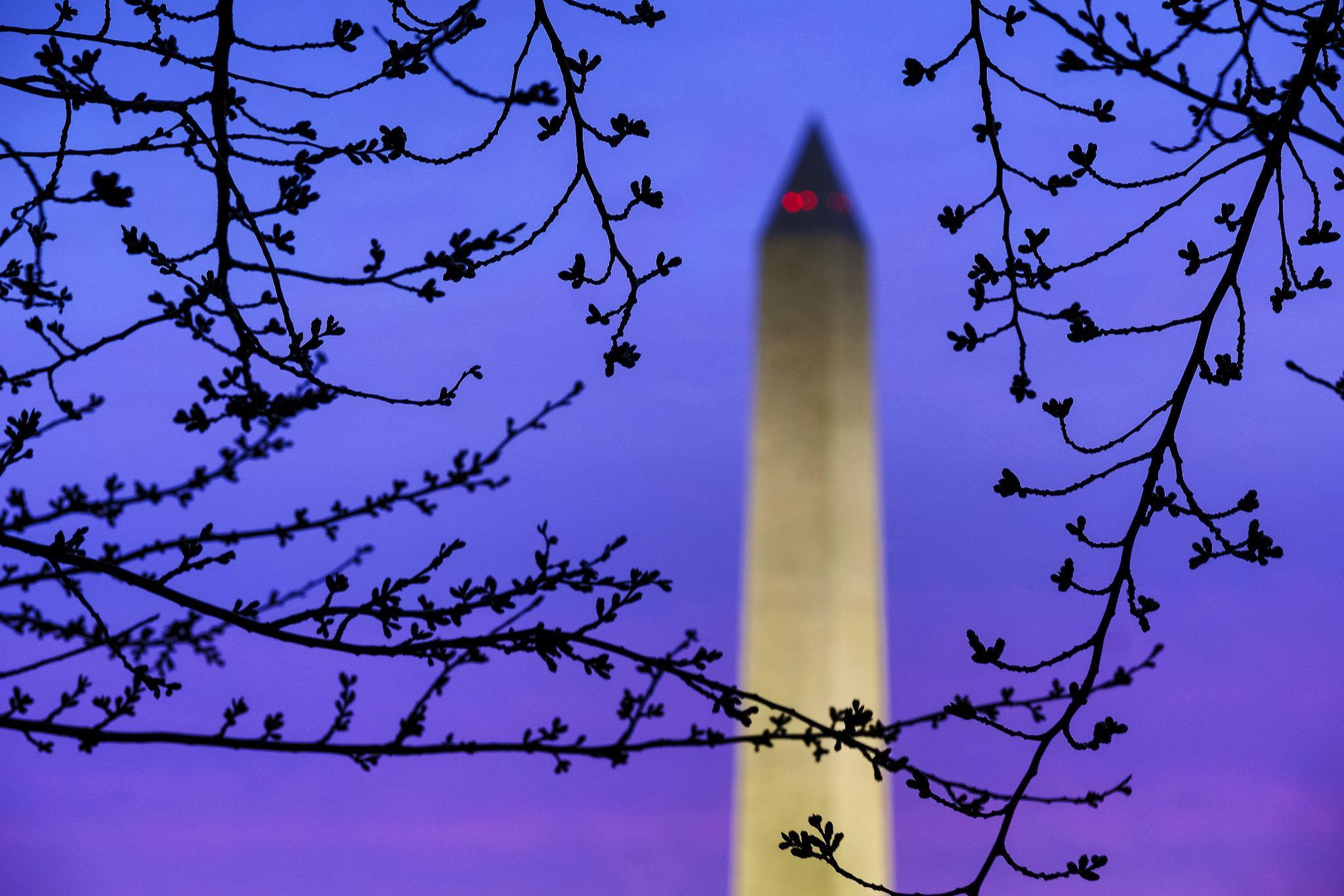Washington DC's cherry blossoms bloom later this year - but they remain an indicator of climate change
National Park Service is now expecting the peak bloom to be the week of 8 April

Washington DC's famous cherry blossoms are blooming later than expected - a blip in the overall trend for the flowers that draw thousands to the nation’s capital each spring and are considered to be another signal of climate change.
After an especially cold March, the National Park Service is now expecting the peak bloom of DC’s cherry blossoms to be the week of 8 April - three weeks after the agency’s original projection.
Last year’s peak bloom was on 25 March, after about half of the Yoshino blossoms were lost due to a late frost about two weeks before.
The news of a late bloom this year may have upset tourists and DC residents alike. While early blooming may cause Washington’s educated liberals to fret about climate change, the appearance of flowers along the Tidal Basin tends to be a good sign that locals have made it through winter.
Attendees of the National Cherry Blossom Festival may also be disappointed. The event, which kicked off last Sunday and will end on 15 April, is held each year to commemorate the 1912 gift of cherry trees from Mayor Yukio Ozaki of Tokyo to the city of Washington.
“The most likely time to reach peak bloom is between the last week of March and the first week of April,” reads the NPS website. “Extraordinary warm or cool temperatures have resulted in peak bloom as early as March 15 (1990) and as late as April 18 (1958).”
The agency notes that it’s “almost impossible” to predict peak bloom more than 10 days in advance because weather conditions have such a large effect on timing.
Peak bloom is defined as when 70 per cent of cherry blossoms along the Tidal Basin are blooming. The average peak bloom happens around 31 March.
“The Yoshino trees typically bloom for a period of several days. The length of the blooming period depends on weather conditions,” the NPS says. ”Cool, calm weather can extend the length of the bloom, and a rainy, windy day can bring an abrupt end to the ephemeral blossoms. A late frost can prevent the trees from blooming at all.”
The Smithsonian Institution published research in 2001 showing that spring blooming of cherry trees advanced by seven days from 1970 to 1999, an effect of climate change.
One of the paper’s authors, Paul Peterson, who is still with the Institution, said this trend is still occurring.
“The climate is warming. Plants are blooming earlier,” he told The Independent.
He added that the flowers don’t bloom early every year, such as this year because of Washington’s cold March.
“There are blips in the data,” he said. “But the overall trend stays the same.”
Patrick Gonzalez, the NPS’s climate change scientist, said weather station measurements since 1946 in Washington show a statistically-significant temperature increase of 1.6 degrees Celsius per century, double the global rate.
“In flowering trees, heat breaks winter dormancy, so earlier cherry blooming is consistent with heating caused by climate change.”
Earlier blooming possibly increases the chance that a snow or frost might follow the leafing out of the trees, damage the leaves, and reduce the growth and health of the tree, Mr Gonzalez told Vox last year.
The park service grows replacement cherry trees at an off-site nursery, just in case.
Join our commenting forum
Join thought-provoking conversations, follow other Independent readers and see their replies
Comments